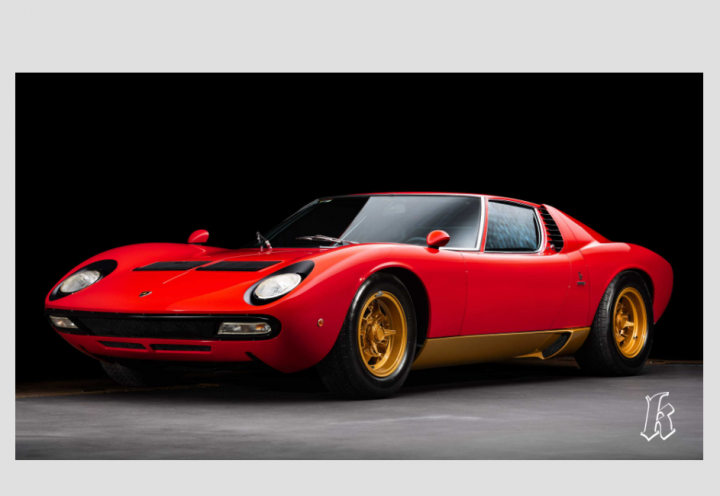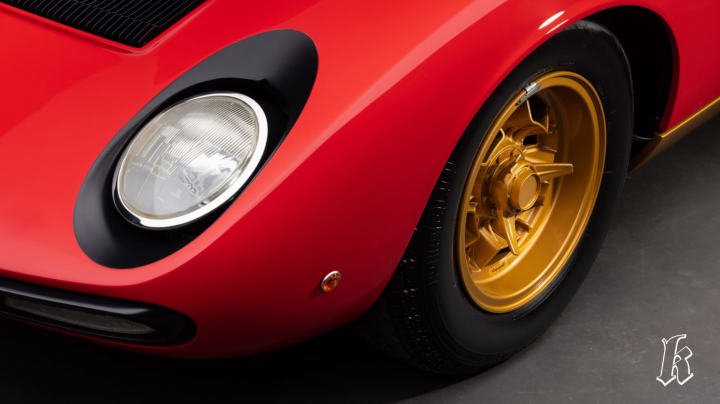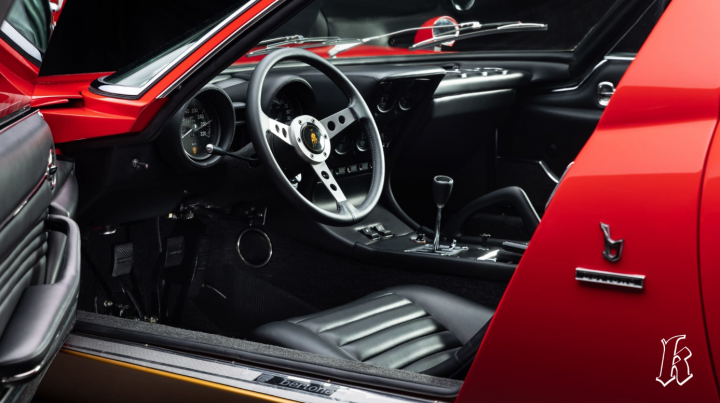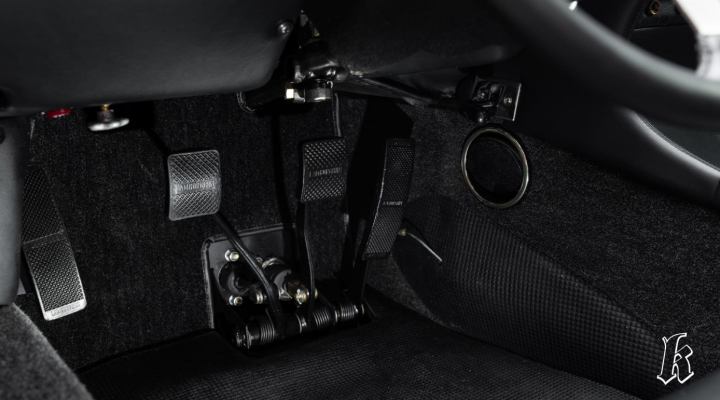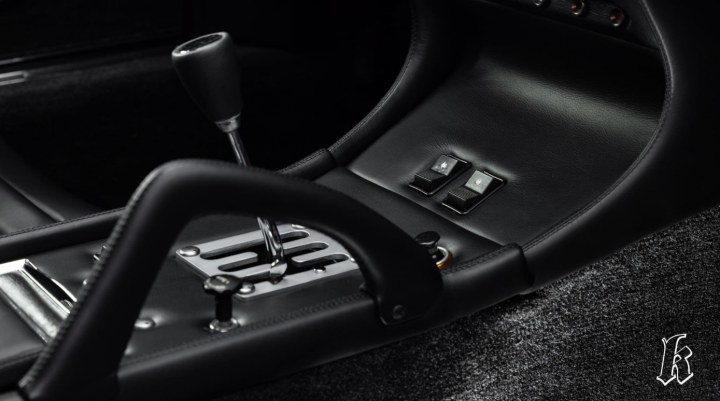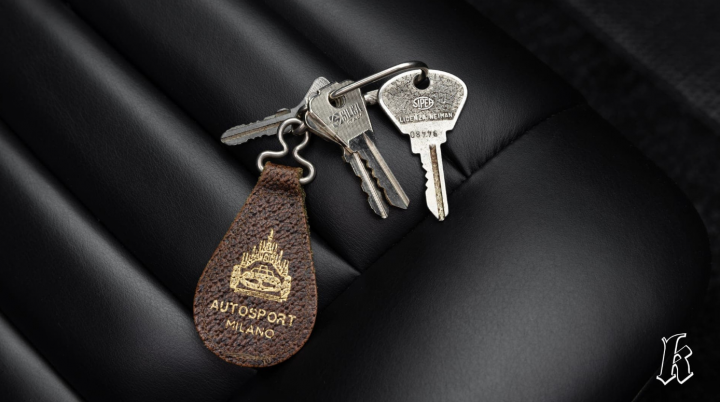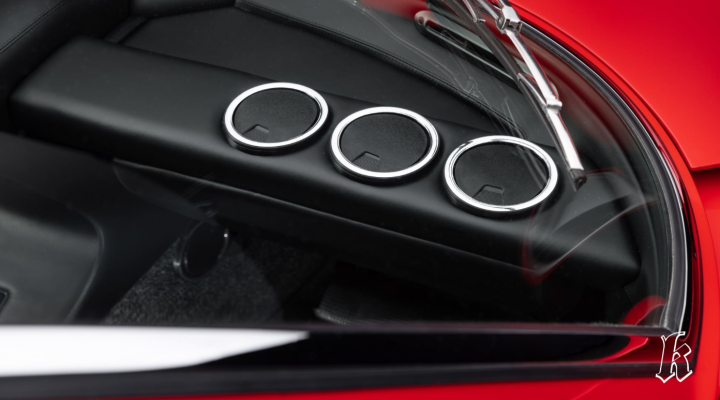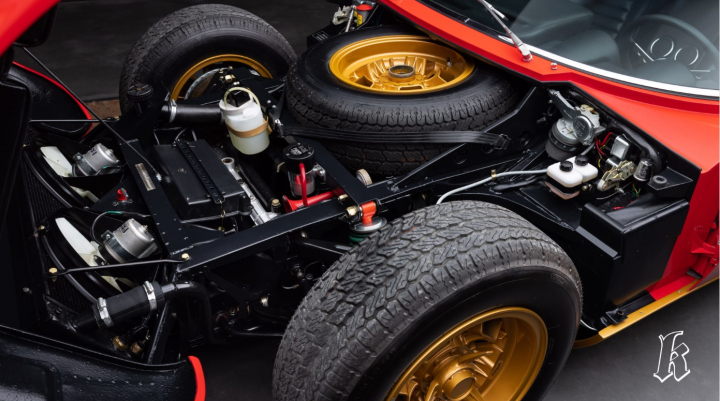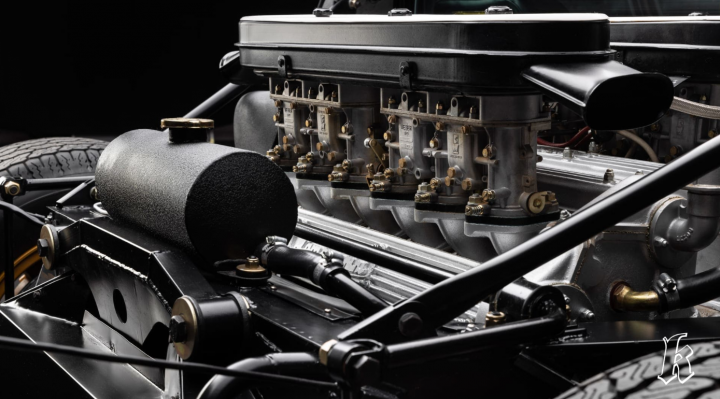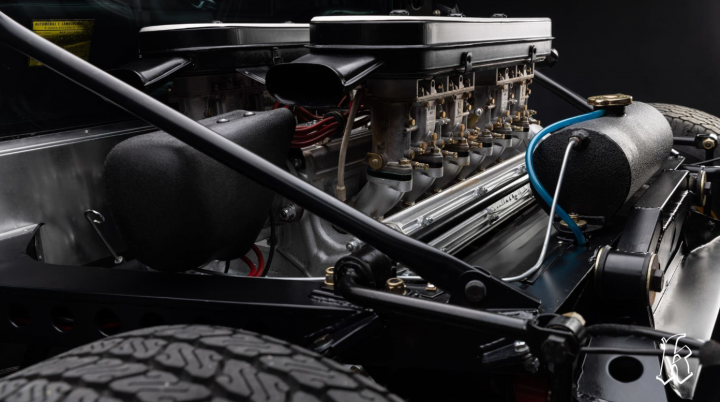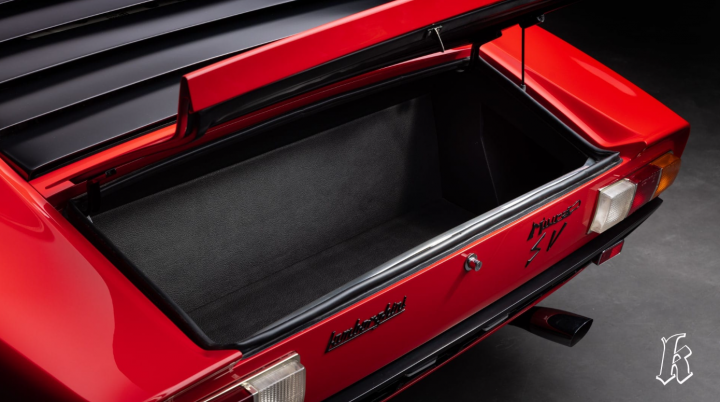1972 Lamborghini
Miura
P400 SV
Price on request

|
Carrosserie
|
Coupe
|

|
Transmissie
|
Manual
|

|
Kleur
|
Red
|

|
Bekleding
|
Leather
|

|
Stuur
|
Lhd
|
The Miura SV was launched at the 1971 Geneva Salon. It was the swansong of the ‘first supercar’ dynasty that made its debut at the same event in 1966. A final appearance it might have been, but few would dispute that the SV is the finest driving, most developed and most desirable of all production Miuras.
It is also the rarest: barely 150 were built before the last car rolled off the line early in 1973. Today, the Miura SV is widely considered the most collectible Lamborghini ever made.
he Lamborghini Miura P400 SV
The Lamborghini Miura was the wildest poster car of the late-1960s generation. It was the first mid-engined sports car in series production: a favourite of rock royalty, the European Jet Set and the absolute rulers of the Middle East.
From the innovative but hastily developed P400, Lamborghini’s engineers constantly strove to upgrade the Miura. A stiffer chassis, vented disc brakes, the latest Pirelli tyres and improved cabin ventilation were some of the changes introduced during the lifetime of the P400 and P400 S, but the last-of-the-line SV represented a bigger step: the most resolved Miura yet and, finally, a complete package.
With a more aggressive stance and beefed-up bodywork to cover wider rear wheels and tyres, the SV looked the business – even the ‘eyelashes’ had gone. Small changes to suspension geometry and a nominal increase in output to 385bhp made the SV the most potent and developed Miura of them all. From car 666 onwards, engine oil no longer had to lubricate both engine and gearbox – the famous ‘split sump’. Only 96 SVs were completed as such when new, a feature that allowed bespoke lubricants for each mechanical task and reduced the risk of metal particles from the gearbox entering the powerful V12. By the 1970s, air-conditioning became an option, especially for US market Miuras.
The new SV was bought by the same eclectic mix of wealthy and sometimes celebrity enthusiasts who were drawn to the original P400. Qatar’s ruling Al Thani family owned one. So did rock legends Rod Stewart and Tony Iommi of Black Sabbath. The Iranian Royal Court ordered one in peacock blue, and the Shah personally took delivery of the first SVJ, the built-to-order ‘Café Racer’ variant.
Miura SV production eventually ran just short of 150 examples and even today some are unaccounted for. The purest were to European specification, so had no side repeaters or other US-imposed safety features such as ‘anti-smog’ engines and hexagonal wheel nuts with no winged ‘ears’.
The SV has always been the most prized and valuable production Miura. Sitting at the pinnacle are European specification, split-sump examples, never modified or ‘improved’ in lands far from home and still in their original colours. This 1972 Miura P400 SV is one of those rare cars.
This Motor Car
According to factory sales department paperwork, Lamborghini Miura SV chassis 5020 was despatched on 12 May 1972. Italian Auto Club d’Italia registration records confirm the first owner as 40-year old Felice Fruttero of Fossano in the Langhe region near Alba, who registered the car locally CN 267694.
The sale was handled by Lamborauto of Turin, one of the most successful Lamborghini dealers in Italy, who issued an invoice for 7,520,000 lire. Bertone – who built, painted and trimmed the bodies before final assembly at Lamborghini – note in their records that the car was finished in Rosso Corsa with a Pelle Nera (black leather) interior. ‘AC’ is marked in red signifying preparation needed for air-conditioning, but despite the dashboard vents there is no evidence it was ever actually fitted: this was not uncommon as clients sometimes changed their minds after an initial order had been sent to Bertone.
As production number 721, the car is a late Miura SV with the desirable split-sump engine/ gearbox. Bertone’s numbering jumped by 100 earlier in the build sequence of Miuras, so it refers to chassis 5020 as car 821. Miura production stopped after 762 cars had been built; ‘5020’ is in the last 50 sold.
In October 1972, at 12,028km, the car returned to the factory and the following month was sold via Lamborauto to Turin resident Lodovico Mossa. Mossa settled the invoice in instalments over six months totalling 5,250,000 lire and registered it in Turin as TO H04061.
From Mossa the car passed through other northern Italian owners’ hands and in 1988 it was returned to Sant’Agata for service work. The Italian registration was cancelled on 1 February 2008 following the car’s purchase by a major German collector. At that point the distance so far recorded was 25,300km.
Kidston SA conducted the sale of the car to the current highly respected Italian collector in 2016. Soon afterwards it arrived home in the Modena area for a complete restoration with the most experienced Miura experts in the world: Top Motors Salvioli for mechanical work; Carrozzeria Cremonini for body and paint; William Gatti for electrics; and Interni Auto for upholstery. Every detail of the restoration is fully documented and the car is featured on page 237 of our book ‘The Lamborghini Miura’ (published in 2020) and the accompanying Miura Register (published in 2021).
Lamborghini Polo Storico inspected the car in March 2018, issuing certification that describes chassis 5020 as “compliant with the original and therefore authentic” adding: “Furthermore, the general condition of the vehicle and its components is excellent.” Since restoration the car has covered circa 1,000km, bringing the total to 26,800km at the time of writing.
Interest in the Lamborghini Miura continues to grow. The hunt for the right car has never been easy, and in the past 50 years many have suffered from accident damage, poor maintenance, misguided ‘improvement’ and fantasy restorations.
A late European-specification SV is the Miura to have: this car wants for nothing and ticks all the boxes.
